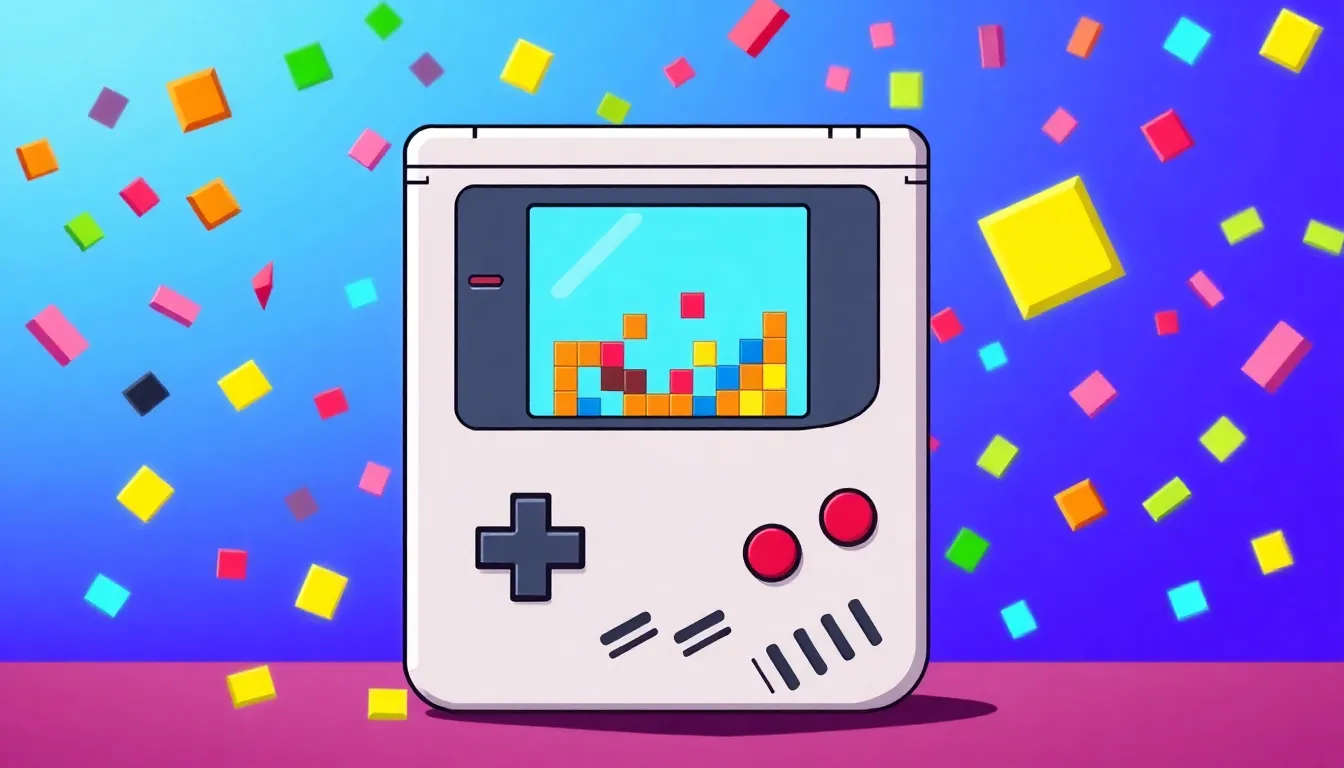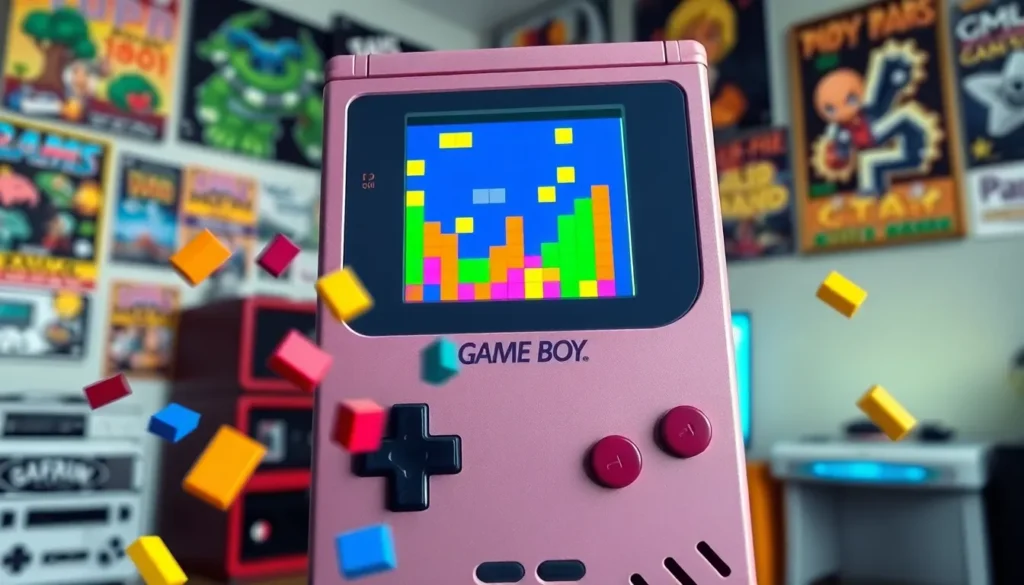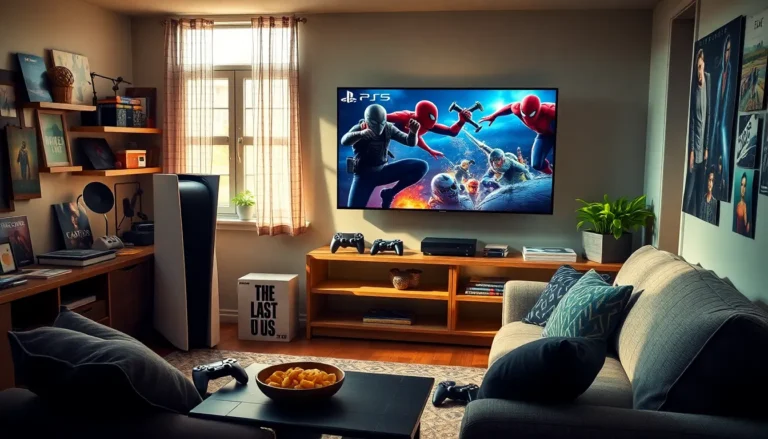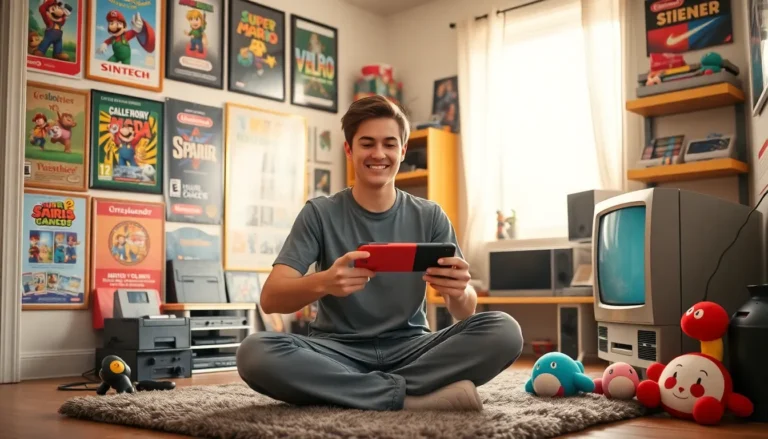In the world of gaming, few titles have captured hearts and minds like Game Boy Tetris. This pixelated puzzle phenomenon isn’t just a game; it’s a rite of passage for anyone who’s ever dared to stack blocks in a frantic race against time. With its catchy theme music and addictive gameplay, it’s no wonder players have lost countless hours—who knew falling bricks could be so captivating?
Table of Contents
ToggleOverview of Game Boy Tetris
Game Boy Tetris revolutionized handheld gaming when it launched in 1989. Players quickly became engrossed in the simple yet challenging mechanics of arranging falling Tetriminos. Many consider its gameplay flow addictive, where skill and speed dictate success. The original 8-bit graphics, while basic, provided a nostalgic charm that resonated with players.
Notable for its iconic music, Game Boy Tetris featured a catchy theme that enhanced the experience. This theme became synonymous with the game, often stirring feelings of nostalgia in players. Difficulty levels increased progressively, presenting challenges that kept players engaged for hours.
The game’s multiplayer mode added social aspects, allowing players to compete against friends. Competitive play ignited friendly rivalries, making sessions even more thrilling. High scores encouraged repeated play, as players aimed to surpass their best efforts.
Game sales reached over 30 million copies, proving its immense popularity. This success established Tetris as one of the best-selling video games in history. Developers crafted Game Boy Tetris with accessibility in mind, appealing to a wide audience ranging from casual gamers to experienced players.
In terms of cultural impact, it influenced many games that followed. Innovations introduced in Tetris inspired countless variations and adaptations in the puzzle genre. Game Boy Tetris remains a cornerstone of gaming history, exemplifying the power of simplicity in design. Its legacy continues to thrive in modern gaming, evident in newer iterations and remakes.
History of Game Boy Tetris

Game Boy Tetris holds a pivotal place in gaming history, capturing the hearts of millions since its debut.
Development and Release
Developed by Game Freak in collaboration with Nintendo, Tetris adapted Alexey Pajitnov’s original design for the Game Boy platform. Released in 1989, the game showcased innovative mechanics tailored for handheld gaming. Developers simplified controls, making gameplay intuitive yet challenging. The combination of addictive gameplay and portability allowed users to play anywhere, at any time. Initially bundled with the Game Boy, Tetris quickly became a must-have title for new owners. Reception was overwhelmingly positive, with critics praising its appeal to both casual and core gamers. The game sold over 30 million copies by 2009, solidifying its status as a cultural phenomenon in gaming.
Cultural Impact
Game Boy Tetris transcended gaming, influencing pop culture and inspiring various media. It contributed to the rise of video games as a mainstream hobby, reaching demographics beyond traditional gamers. Iconic theme music from the game became synonymous with gaming nostalgia, often referenced in popular media. Numerous studies highlighted Tetris’ impact on cognitive skills, illustrating its unique blend of fun and mental engagement. The game inspired tournaments, competitive play, and even academic research, further showcasing its significance. Countless iterations of Tetris emerged, yet the original Game Boy version remains a benchmark for simplicity and addictive gameplay. Its legacy continues to engage players through remakes and mobile adaptations, demonstrating the enduring appeal of Game Boy Tetris.
Gameplay Mechanics
Game Boy Tetris features straightforward yet engaging gameplay mechanics that have captivated players for decades.
Game Controls
Controls in Game Boy Tetris promote user-friendly interactions. The D-pad moves Tetriminos left, right, or down. The “A” button rotates pieces clockwise, while the “B” button drops them faster. Players can easily navigate the game with intuitive controls, allowing for quick decision-making during intense gameplay. Feedback from players consistently highlights the controls’ responsiveness, enhancing immersion in the gaming experience. Simple setup allows players to grasp the mechanics quickly, making it accessible yet challenging. As a result, even newcomers find themselves becoming absorbed in the game rapidly.
Scoring System
The scoring system in Game Boy Tetris rewards skillful play. Different actions yield varying point totals; clearing lines earns players 100 points per line when they clear one, 300 for two, 500 for three, and 800 for four lines in a single move. Achieving consecutive line clears, known as Tetrises, boosts points significantly. Additionally, players increase their score by earning combo multipliers through quick line clears. This system encourages strategy, as players aim for higher scores and efficient Tetrimino placement. Competing for high scores adds another layer of excitement, making every play session competitive and engaging.
Legacy of Game Boy Tetris
Game Boy Tetris shaped gaming culture in numerous ways and influenced countless aspects of the industry.
Influence on Future Games
Game Boy Tetris set the stage for puzzle games, inspiring developers to explore similar mechanics. The concept of matching falling shapes became a standard formula for many titles. Titles like Puyo Puyo and Lumines borrowed ideas from Tetris to create engaging experiences. Innovations in gameplay, such as timed modes and multiplayer options, followed its success. Players expect similar challenges in contemporary games, reflecting Tetris’ legacy. Many game designers cite Tetris as a foundational influence, showcasing its role in crafting addictive gameplay loops. Continued remakes and variations indicate its significant position in gaming evolution.
Tournaments and Competitions
Tournaments emerged from the popularity of Game Boy Tetris, highlighting competitive play. Events like Classic Tetris World Championship attracted passionate participants and spectators. Players showcase their skills and speed, often pushing themselves to achieve remarkable high scores. Competitive formats encourage new techniques and strategies, fostering community engagement. Players form bonds through these events, celebrating their shared love for Tetris. The rise of online platforms also made competitions more accessible. A dedicated fan base continues to drive interest in Tetris, reinforcing its status as an enduring competitive title.
Game Boy Tetris is more than just a game; it’s a cultural milestone that transformed the landscape of handheld gaming. Its simple yet addictive mechanics have left an indelible mark on players and the gaming industry alike. The nostalgic graphics and iconic music continue to resonate with fans old and new.
As it inspires countless variations and tournaments, Game Boy Tetris proves that great gameplay transcends time. Its legacy remains strong, reminding everyone of the joy and challenge that a well-crafted game can bring. Whether played casually or competitively, the enduring appeal of Tetris ensures its place in gaming history for generations to come.






